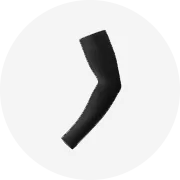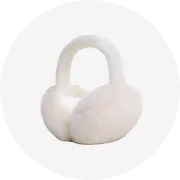Phổ biến trong ngành của bạn






Nhà Sản Xuất Trung Quốc Chất Lượng Cao Vòng Chuck Điện Từ
375,00 US$ - 1.900,00 US$
Đơn hàng tối thiểu: 1 Bộ







Trong Kho Chất Lượng Cao ISO25 APU08 Khoan Chuck Xử Lý Phạm Vi 1-8Mm Cho Khoan
35,00 US$ - 45,00 US$
Đơn hàng tối thiểu: 1 Cái







Nhà Sản Xuất Trung Quốc Giá Cả Hợp Lý Xay Đa Chức Năng Mạnh Mẽ Thông Tư Điện Từ Chuck X21-500mm
2.700,00 US$ - 2.800,00 US$
Đơn hàng tối thiểu: 1 Bộ


Chất Lượng Ban Đầu Hilti Chuck SDS Loại Khoan TE 16 30 40 Chuck
6,00 US$ - 10,00 US$
Đơn hàng tối thiểu: 100 Cái






NEW ORIGINAL Two claw hollow hydraulic chuck OPT-205 OPT-206 OPT-208 OPT-210
6,88 US$ - 8,88 US$
Đơn hàng tối thiểu: 1 Cái






EGNC JT50-HC06 Thủy Lực CNC Độ Chính Xác Cao Chính Hãng/HC08/HC10/HC12-75/80
1,00 US$ - 6,00 US$
Đơn hàng tối thiểu: 10 Cái






Tự động CNC ống cắt laser Chuck nhà sản xuất thép không gỉ ban đầu 3 năm khí nén Chuck 4 ống 4 hàm quay Chuck
4.600,00 US$ - 5.400,00 US$
Đơn hàng tối thiểu: 1 Bộ





Mũi Khoan Điện Góc Phải Thiết Bị Xoay Lục Giác Thiết Bị Xoay Uốn Cong Mở Rộng Kẹp Ba Hàm Phạm Vi 1-10Mm Nguồn Gốc
Sẵn sàng vận chuyển
7,30 US$ - 7,90 US$
Đơn hàng tối thiểu: 1 Cái
Vận chuyển mỗi chiếc: 14,37 US$






Oumeia gốc phong phú cổ mạnh mẽ CNC mâm cặp BT40-C32-105/135/165
Sẵn sàng vận chuyển
1,00 US$
Đơn hàng tối thiểu: 10 Cái
Vận chuyển mỗi chiếc: 0,54 US$




Howa Nhật Bản nhập khẩu ban đầu Chuck lệch tâm bồi thường Chuck 3-hàm thủy lực Chuck
Sẵn sàng vận chuyển
5.117,60 US$ - 6.767,60 US$
Đơn hàng tối thiểu: 1 Bộ
Vận chuyển mỗi chiếc: 140,00 US$






New & Original PLC máy công cụ phụ kiện Chuck CAH-10
130,00 US$ - 220,00 US$
Đơn hàng tối thiểu: 1 Cái




10090311 Hilti điện khoan búa phụ tùng Keyless TE30/40 Chuck
Sẵn sàng vận chuyển
5,84 US$ - 6,83 US$
Đơn hàng tối thiểu: 50 Cái
Vận chuyển mỗi chiếc: 161,18 US$


10 Miếng 0.5-3.2Mm Brass Collet Khoan Chuck Phù Hợp Với Quay Công Cụ Mài Máy Khoan Thu Thập Chuck Chủ
1,47 US$ - 2,65 US$
Đơn hàng tối thiểu: 5 Cái



Nhật Bản lớn daishowa thủy lực Chuck BT HSK công cụ chủ độ chính xác cao Chuck
10,00 US$ - 50,00 US$
Đơn hàng tối thiểu: 10 Cái






Ban Đầu MAKITA Chất Lượng Cao Khoan Chuck Kit Đối Với Tác Động Búa & Khoan Máy Công Cụ Điện Phụ Kiện Khoan Chuck
Sẵn sàng vận chuyển
8,50 US$ - 20,00 US$
Đơn hàng tối thiểu: 1 Cái
Vận chuyển mỗi chiếc: 19,75 US$






Bộ 4 Đầu Cặp Khoan Điện Mini Đầu Cặp Khoan 0.3-4Mm Có Lỗ Đuôi Ống 8Mm
2,20 US$ - 2,40 US$
Đơn hàng tối thiểu: 10 Cái






Phần Mềm EZCAD Chính Hãng 2.14.11 Laser 20W 30W 50W Máy Khắc Laser Bằng Sợi Xách Tay Với Mâm Cặp Xoay
Sẵn sàng vận chuyển
200,00 US$ - 2.380,00 US$
Đơn hàng tối thiểu: 1 Bộ
Vận chuyển mỗi chiếc: 800,00 US$






DIN1142 Kẹp Dây Thép Không Gỉ 304
Sẵn sàng vận chuyển
0,20 US$ - 0,50 US$
Đơn hàng tối thiểu: 100 Cái
Vận chuyển mỗi chiếc: 6,63 US$






Bán chạy nhất SDS Shank M22 nam không có lỗ lõi bit Bộ chuyển đổi Chuck
1,70 US$
Đơn hàng tối thiểu: 50 Cái






Nhà Máy ban đầu cung cấp trực tiếp sợi Laser ống máy cắt ống nhỏ tự động tải duy nhất Chuck thẳng cắt Ống
23.000,00 US$ - 28.000,00 US$
Đơn hàng tối thiểu: 1 Bộ






Ec-mart linh kiện điện tử tự đàn hồi Chuck Sim-6 Sim 6P vá 6p SK-C793
0,10 US$ - 0,80 US$
Đơn hàng tối thiểu: 1 Cái






DC 775 Động Cơ RS 775 28 Volt RS 775 DC 12V Động Cơ 775 DC Động Cơ Khoan Chuck 775 DC Động Cơ Vòng Bi
Sẵn sàng vận chuyển
5,40 US$ - 23,40 US$
Đơn hàng tối thiểu: 2 Cái
Vận chuyển mỗi chiếc: 10,00 US$



Hút-cup DC châm điện P30/22 nhỏ châm điện hút Chuck điện áp 12V và 24V 10kg
1,54 US$ - 2,70 US$
Đơn hàng tối thiểu: 5 Cái

FESTT Mâm Cặp Chân Không 151689-KMEB-1-24-5-LED 999984-vl/O-3-1/4
20,00 US$ - 100,00 US$
Đơn hàng tối thiểu: 1 Cái












Mâm Cặp 4 Hàm K72-200/Mâm Cặp Máy Tiện Thủ Công 200MM/Mâm Cặp Độc Lập 4 Hàm
100,00 US$ - 500,00 US$
Đơn hàng tối thiểu: 1 Cái






Gốc ezcad phần mềm Laser 20W 30W 50W 100W sợi laser cầm tay đánh dấu máy với xoay Chuck với ROTARY
1.100,00 US$ - 1.200,00 US$
Đơn hàng tối thiểu: 1 Bộ






Mâm Cặp Khoan Đa Năng Mini Kẹp Cố Định 0.3-6.5Mm Chuôi Lục Giác Mâm Cặp Khoan Siêu Nhỏ Kẹp Khoan Ba Hàm
Sẵn sàng vận chuyển
1,40 US$ - 2,00 US$
Đơn hàng tối thiểu: 1 Cái
Vận chuyển mỗi chiếc: 7,11 US$






Khối Nam Châm Hướng Dẫn Mài Khối Mâm Cặp Từ Tính Dài Song Song F35A / F35B/ F36V / F37V
40,98 US$ - 41,42 US$
Đơn hàng tối thiểu: 5 Cái






MT1/2/3/4-FMB22/27/32 Morse Côn Mặt Phay & Máy Phay Chuck Trong Kho Phong Phú
Sẵn sàng vận chuyển
12,00 US$ - 22,00 US$
Đơn hàng tối thiểu: 1 Cái
Vận chuyển mỗi chiếc: 44,36 US$












Phần Mềm EZCAD Chính Hãng 2.14.11 Laser 20W 30W 50W Máy Khắc Laser Bằng Sợi Xách Tay Với Mâm Cặp Xoay
Sẵn sàng vận chuyển
200,00 US$ - 2.380,00 US$
Đơn hàng tối thiểu: 1 Bộ
Vận chuyển mỗi chiếc: 660,00 US$


10 Miếng 0.5-3.2Mm Máy Khoan Collet Bằng Đồng Thau Phù Hợp Với Dụng Cụ Quay Máy Khoan Mài Thu Thập Chuck Chủ
1,47 US$ - 2,65 US$
Đơn hàng tối thiểu: 1 Cái






Chất lượng cao erowa hệ thống điện Chuck 150 với tấm 3a-100050
Sẵn sàng vận chuyển
790,00 US$ - 857,00 US$
Đơn hàng tối thiểu: 1 Cái
Vận chuyển mỗi chiếc: 90,93 US$






100% mới và ban đầu nhà máy nóng bán electro-vĩnh Viễn tự động cánh tay robot từ Chuck
600,00 US$ - 800,00 US$
Đơn hàng tối thiểu: 1 Bộ






GUANG CHEN Bộ Dụng Cụ Không Dây Bộ Dụng Cụ Điện Bộ Dụng Cụ Kết Hợp Đôi Tốc Độ Không Cần Chìa Khóa 20V Máy Khoan Không Dây
30,00 US$ - 45,00 US$
Đơn hàng tối thiểu: 5 Hộp
Các danh mục hàng đầu
Giới thiệu về mâm cặp nguyên bản
Alibaba.com cung cấp các sản phẩm 589 mâm cặp nguyên bản. Có rất nhiều mâm cặp nguyên bản lựa chọn dành cho bạn, chẳng hạn như máy tính để bàn, tủ quần áo, và phòng ngủ. Bạn cũng có thể chọn từ carbon thép, hợp kim nhôm, và pp mâm cặp nguyên bản. Cũng như từ bạc, màu xanh mâm cặp nguyên bản.Và bất kể mâm cặp nguyên bản là mùa xuân, mùa thu, hay mùa đông.











































